Making your decision to get hearing aids
Every process begins with a decision. The key to success with hearing aids is: that you have decided for yourself that you are ready to get help with your hearing. Have
The post Making your decision to get hearing aids appeared first on Auckland Hearing.
]]>
The key to success with hearing aids is: that you have decided for yourself that you are ready to get help with your hearing.
Have you observed or decided some or all of these:
And that you want to do it for you – not to please someone else.

Over the years that your hearing has been gradually changing, so has your brain. The hearing part of your brain has been receiving less sound input, so it has had less information to process. It has forgotten what to do, as it hasn’t had to work so hard. Other parts of your brain have been working harder to try and keep up with the conversation. This can cause auditory fatigue or tiredness at the end of the day.
Luckily, once we provide that missing sound to your hearing system with hearing aids, it can begin to use the information again. Brain plasticity means you can relearn and rewire. Just like when we start on a new exercise program, when we get hearing aids, we need to start slowly and rebuild our “hearing muscles”. As long as it hasn’t been too long and your hearing loss is not too severe, your brain plasticity will mean you will relearn to process the sounds you have been missing and usually, we can get most of your hearing functionality back.

Luckily, hearing aids now have an excellent sound quality, and you will adjust very quickly as long as you wear them all the time and get used to hearing again. Within half an hour, sounds that seemed strange or new when you first put on the hearing aids will begin to normalise.
The key to real success with hearing aids is continual use. You must be ready in yourself to get hearing aids, so you embrace the process for maximum benefit. We want to create a new normal – Normal to hear.
To create a new normal, we are going to ask you to wear your hearing aids as much as you can, from the time you wake up in the morning until you go to bed at night. At first, you may find it tiring. Your brain will have to work hard to process the extra sound that it had forgotten about over the last few years. By the end of the first two weeks, you should be at the point where you can wear your hearing aids all day every day. By the time you finalise your hearing aids, it will feel normal for you to hear.
Usually, we begin the hearing aid fitting process by working out how much sound you require to compensate for your hearing loss, then turning the hearing aids down. The goal at the first fitting is to get the sound comfortable. We want you to wear the hearing aids as much as possible, giving your brain time to adjust to the new sounds. We then gradually turn the sound up over time. This process gives your brain time to adapt and change, keeping sound comfortable at the start and increasing the clarity over time.
You must decide that you need hearing aids for yourself. Once you have chosen to improve your hearing, there will be a short adaption process to go through as you adjust to hearing again.

Max Ross
Auckland City
When you come along for your hearing assessment appointment, we will talk to you about your hearing loss and how it is affecting your life. We will present options to help with your hearing (if required). After this appointment, you will have time to think about and notice those effects as they happen in your everyday life.
You will know when you are ready to take action. You will be ready to:
Ready Now? Follow this link to book your appointment.
Once you have decided to get hearing aids, please give us a call and we will make you an appointment.
Or read on to the next article to find out more about the process of getting hearing aids.
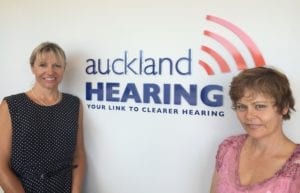
Anna and Maree – At Auckland Hearing
Auckland Hearing is an independent hearing aid and audiology clinic set up by Maree O’Sullivan. Maree
has worked in Audiology for nearly 25 years. She started Auckland Hearing so she could focus on the needs of each client (rather than corporate profits).
We provide a full range of hearing services and work with all of the Ministry of Health approved hearing aid brands in New Zealand. This means we can fit the hearing aids that best suit your needs.
The post Making your decision to get hearing aids appeared first on Auckland Hearing.
]]>The post Hearing Aid Technology and Innovation appeared first on Auckland Hearing.
]]>
Like computers, tablets and phones, innovations in hearing aid technology is improving quickly. Hearing aids have more and more functions and features which fit into tiny packages that sit in or behind your ear. Current hearing aids do more than compensate for hearing loss with amplification. They are small computers that measure your sound environment then modify the way they amplify to maximise your hearing clarity.
When getting hearing aids, we need to consider the technology level and functionality that will best compensate for your hearing loss. There are also other features and additional connectable technology you might find useful to make life easier.
Excellent core hearing aid functionality is key to success. Choosing the correct level of amplification, fitting to your ear and technology level for your hearing needs must be guided carefully by your Audiologist. Follow this link for more details about how we go about assessing your listening needs.
Once we have decided on the right hearing aid technology for you, we can consider the added features that are available. These can help with ease of use, connectivity and better hearing in specific listening environments. These features are available at most technology levels. Once we have decided on the right hearing aids for you, we can determine if you would like any additional technology to go along with them.
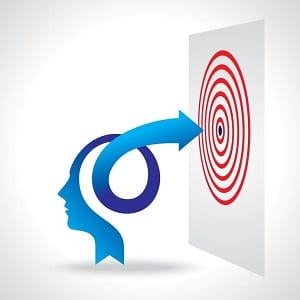
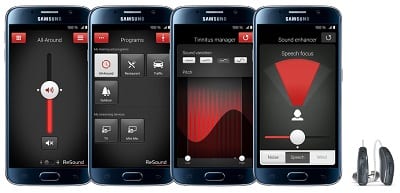
In an ideal world, hearing aids measure the sound environment, highlight the sound you want to hear and bring it to you with increased clarity. In most cases, hearing aids do this well. However, at times, you may wish to adjust the hearing aid sound for the environment you are in. You may want to appreciate the nuances of music, hear the person who is speaking from behind you, like in a car; or understand better in a particularly reverberant (echoey) room.
In these cases, you may want to change the way the hearing aids are working; adjust the volume or focus on sound in a particular direction. These are the situations where a remote-control app may come in handy. Apps usually give you the option to change your hearing aid volume, program setting and, in some cases, pitch and adjust how the hearing aids respond in noise.
Rechargeable batteries in hearing aids have been available for several years. Within the last year, we have seen a surge of new rechargeable hearing aids from more manufacturers with improved battery life. The three main reasons to choose rechargeable hearing aids:
New hearing aids from Starkey and Oticon can now work as a fitness tracker, measuring the steps you do each day. Some hearing aids have inbuilt systems to keep you active both physically and cognitively. Features released in 2019 in by Starkey are:
Voice to text transscription allows you to communicate with someone who speaks a different language. Speak into your phone and it translates into text of the language you are commincating to. They talk back into your phoen and it translates back to English (or other language) and is spoken into your hearing aids.
Hearing aids self check lets you know if you hearing aids are working as expected. When the hearing aids are new we run a check in the office. Then at anytime this test can be rerun with the results compared to the intial test. The hearing aids will let you know if they are working as expected or if they are not working correctly which part of the hearing aids needs to be repaired. The microphone, amplifer or receiver (lond speaker). This allows for accurate trouble shooting and keeping your hearing aids working as expected at all time.

Connecting your hearing aids directly to your TV, sound system or tablet means you will hear the sound a lot clearer the first time. Following the dialogue in movies and TV becomes so much easier. In most cases, we need to add an intermediate device that sends the signal from your preferred audio device to your hearing aids.
One of the biggest challenges for people with significant hearing loss is hearing across distance. Speech understanding can be difficult over more than a few meters, even the best hearing aid technology. Another built-in advantage of the connectivity is that you can use your phone as a remote microphone. Just put your iPhone at the other end of the table or give it to the person with the quiet voice. The sound that reaches the iPhone microphone (or a connected remote microphone) and will be sent directly to your hearing aids.

For some people getting into the clinic to see your audiologist can be a challenge. Maybe you live a long way from the clinic, are not able to get to appointments during work hours or are homebound, for medical or transport reasons. If this describes you, then we have a solution – Telecare audiology is now a reality.
Tele-audiology means that some of the hearing aid fitting process can be delivered from the comfort of your home or office. Once we have done a thorough hearing assessment and have fitted the hearing aids in the clinic (using real ear measures), we can do further follow-ups from a distance. All you need is a smartphone, and your hearing aids can be adjusted over the internet. Being able to customize your hearing aids from the comfort of your home makes the process of getting hearing aids more manageable than before.
Finding the most discrete hearing aids is a priority for many new hearing aid users. Cosmetics, of course, has to be balanced with comfort, reliability, sound quality and functionality (hearing well in more complex situations). Some of the smaller hearing aids, look great and may be able to compensate well for your hearing loss, but may not work as well as other styles in difficult listening situations.
The most commonly fitted style of hearing aids in recent times is the Receiver In the Canal (RIC), also known as the Receiver In The Ear (RITE) / (RIE). These hearing aids have a relatively small hearing aid that sits behind the ear, the receiver (loudspeaker) that sits in the ear.
These hearing aids are discreet, comfortable and easy to wear. If there is a change in hearing levels, the receiver can be changed easily to a more powerful loudspeaker, in the clinic. Or if the receiver breaks down, it can be replaced in the clinic with less hassle (at a significantly lower repair cost). Receiver in the canal hearing aids can be worn with universal fit domes or custom moulds.
There are also many behind the ear styles available with various tubing options for those with more significant hearing loss or other specialise hearing needs.
Some people prefer not the have anything sitting behind their ear. There are various size options available to match your priorities, including Invisible in the Canal (IIC) hearing aids, Completely in the Canal (CICs) and In the Ear (ITE) hearing aids. Most brands have these hearing aid styles available.
ITE hearing aids have historically come with trade-offs in comfort and reliability. Having an electronic device deep inside your ear means more problems with moisture and wax; these issues improved dramatically over the past few years. There are many in the ear styles available.
In my experience, most people like milk with their tea. Some people enjoy sugar in their coffee. Sometimes I prefer herbal tea.

Significant research and development in hearing aid technology means new hearing aids are being released almost continually. As you can see, there are many options to be considered when choosing hearing aids. It is essential to consider how you would like your hearing aids to work for you. Our needs assessment will help steer you in the right direction to get the hearing aids that suit your lifestyle and listening needs best. Finding out about your preferences is an integral part of choosing the best hearing aids for you.
At Auckland Hearing, we keep up to date with new developments from all the manufacturer’s product lines. This is so we can choose the most up to date hearing aids that are best suited to your needs.
The post Hearing Aid Technology and Innovation appeared first on Auckland Hearing.
]]>The post Your Audiologist and your Success with Hearing Aids appeared first on Auckland Hearing.
]]>Hearing Aid Success – Your Audiologist Matters
Hearing aids are a form of technology, similar to your TV or your smartphone. However, when it comes to maximising the benefit of hearing aid technology, just choosing hearing aids off the shelf (or buying off the internet) is unlikely to solve your hearing challenges satisfactorily. An important part of the process is your hearing aid consultation appointment, when we will help lead you to the technology that will best suit your hearing needs.
A successful hearing aid fitting leads to excellent long term hearing outcomes, including hearing well in the environments you are in every day, wearing the hearing aids all (or most of) the time which leads to the maintenance of auditory and cognitive function. Choosing hearing aids or other technology to best suit your lifestyle and listening needs is the first part of the process. The next vital part of the process is making sure the sound is right and that you can maximise the use of your new hearing aids.
Reading about other peoples experience on the internet, while interesting to learn about, may not be reflective of your potential experience; as the person writing the reviews will have different hearing levels, reasons (causes) for their hearing loss and circumstances.
There are multiple factors involved in choosing hearing aids and fitting them well. We need to start with an accurate hearing assessment (and referral for any medical factors that need to be managed, where required). Hearing aids need to have the right amount of power to compensate for your hearing loss and need to be fitted to your ears with comfortable moulds or domes. Hearing aids must be programmed to have the right level of sound output to compensate for your hearing loss, and they must be adjusted for your unique ear acoustics. You will also need to go through a time of adaption while you adjust to the hearing sounds you may not have heard for many years.
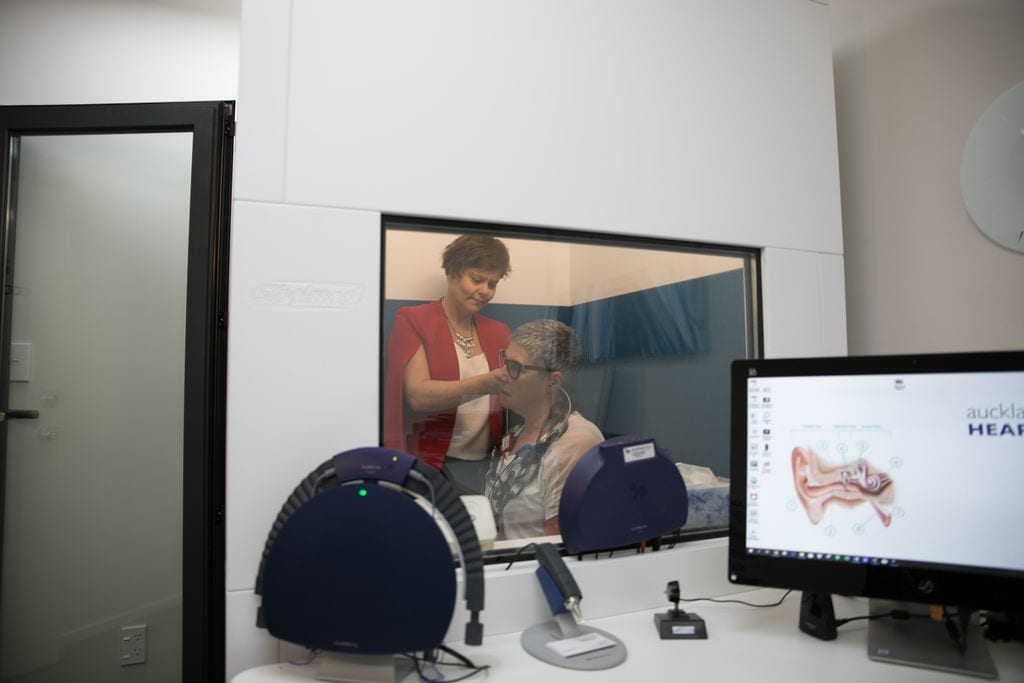
When getting hearing aids for the first time, most people go through a process of accepting and coming to terms with their hearing loss; Audiologists are trained to help in this process. New hearing aid wearers often need help to understand the many reasons for wearing their hearing aids as much as possible and the benefit they will receive from doing this. This process is different for each person.
When choosing hearing aids, technology level is important. It is important to match your lifestyle to the technology level in your hearing aids. There is no point in getting hearing aids that will not meet your everyday listening needs.
In our technology-driven world, it is easy to believe that just getting the right hearing aids is all that is needed to help you hear better. However, getting hearing aids is more of a combination of getting a new smartphone and having a medical procedure; for example, getting a knee replacement.
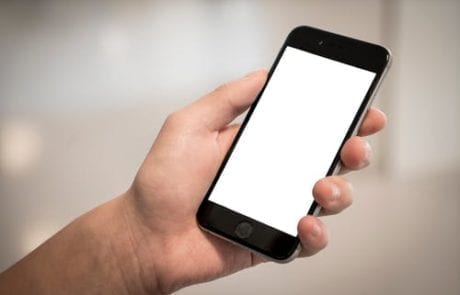
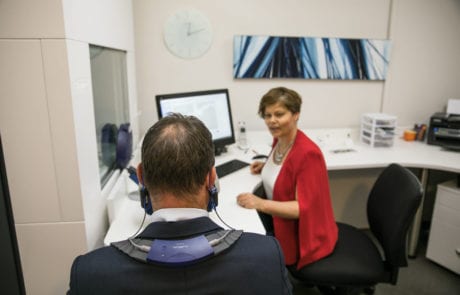


Buying a smartphone
Having hearing aids fitted
Having a knee replacement
When you buy your smartphone there is a consumer or sales focus: Choosing your smartphone is mainly about the product.
You choose the platform you like to work with (i.e. Android / iPhone) and the level of technology. A salesperson might help you select the technology to suit you best. The salesperson may help you set your new phone up in the shop, or you take it home and set it up yourself. The main differentiating factor between a smartphone that works well and one that is not as good, is the product that you chose to buy. These products are designed to plug and play. Just start using them.
If you have a knee replacement (medical model): There are various types of knee replacements available. However, we do not get into a discussion about which knee replacement we will get.
There are too many details about the knee replacement parts that we do not understand the importance of. The surgeon chooses the best implant for our situation taking into account our anatomy and how we will need to use the implant and we have surgery to put it into our body. The surgeon explains what to expect on the day of the surgery, how long it will take to recover and how to adjust to using your new knee. The decisions made by the surgeon and their skill level at the surgery is key to our success with our new knee.
Once you have decided to you are ready to hear better, we work with you to decide which hearing technology will best suit your needs. There are many brands of technology and within each brand there are many models and styles of hearing aids and other technology they can connect with.
At Auckland Hearing, we are an independent clinic. We are not owned by a hearing aid manufacturer or owned by a multinational company that dictates the technology that we need to fit for our clients. This gives us a unique opportunity to assess each brand and model of technology and choose the best solution for each person we see.

The technology/consumer side is where you are involved in the decisions: When choosing hearing aids we will ask you many questions about your priorities and specific areas where you would like to hear better. At this point, we will create specific goals for your hearing improvement and also clarify realistic expectations that we can achieve for your hearing levels.
The higher the technology level you choose the better the hearing aids will work in more complex listening situations. The technology level is linked to the cost of the hearing aids and your Audiologist will work with you to help you choose hearing aids that meet your listening needs at the budget you are comfortable with.
You will be involved in choosing the hearing aids features that you think will be most important for you:
Would you like you to use your phone as a remote control?
Would you like to stream phone calls, music and movies from your phone directly to your hearing aids?
Would you like your hearing aids to be rechargeable? So you do not need to change the batteries.
Are sound quality and hearing aid performance in complex listening environments your priority?
What size and style of hearing aids would you like?
Is ease of use important to you? Would you like to put your hearing aids in and leave them to do their job?
Do you like full control, to be able to control the sound in different listening environments?
Do you need remote programming – so you do not need to come into the clinic for all your appointments?
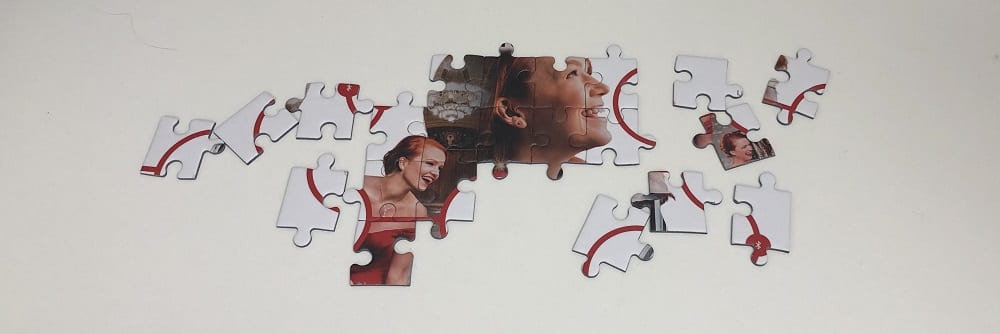
Bringing it all together for better long term hearing outcomes.
Your Audiologist is your hearing partner, working at your side to help you choose a product that suits you best. However – it is even more important that your Audiologist is skilled in Audiology. We need to make sure we have the right level of power in your hearing aids and the sound is adjusted to your specific ear resonances (using real ear measures). We need the to be sure the hearing aids are comfortable for you to wear all day every day and that you know how to get the best out of the technology you have chosen.
There are many areas of the hearing aid fitting process that may not be so obvious but are critical to your success with hearing aids. We accurately assess your hearing and help you understand the reason for your hearing loss. We will refer you on to a medical specialist when needed for further assessment of management and assess funding that may be available to help your hearing. We first lead you to the right products for your hearing levels and listening needs or help you to understand any limitations that may arise due to your hearing loss or the technology chosen.
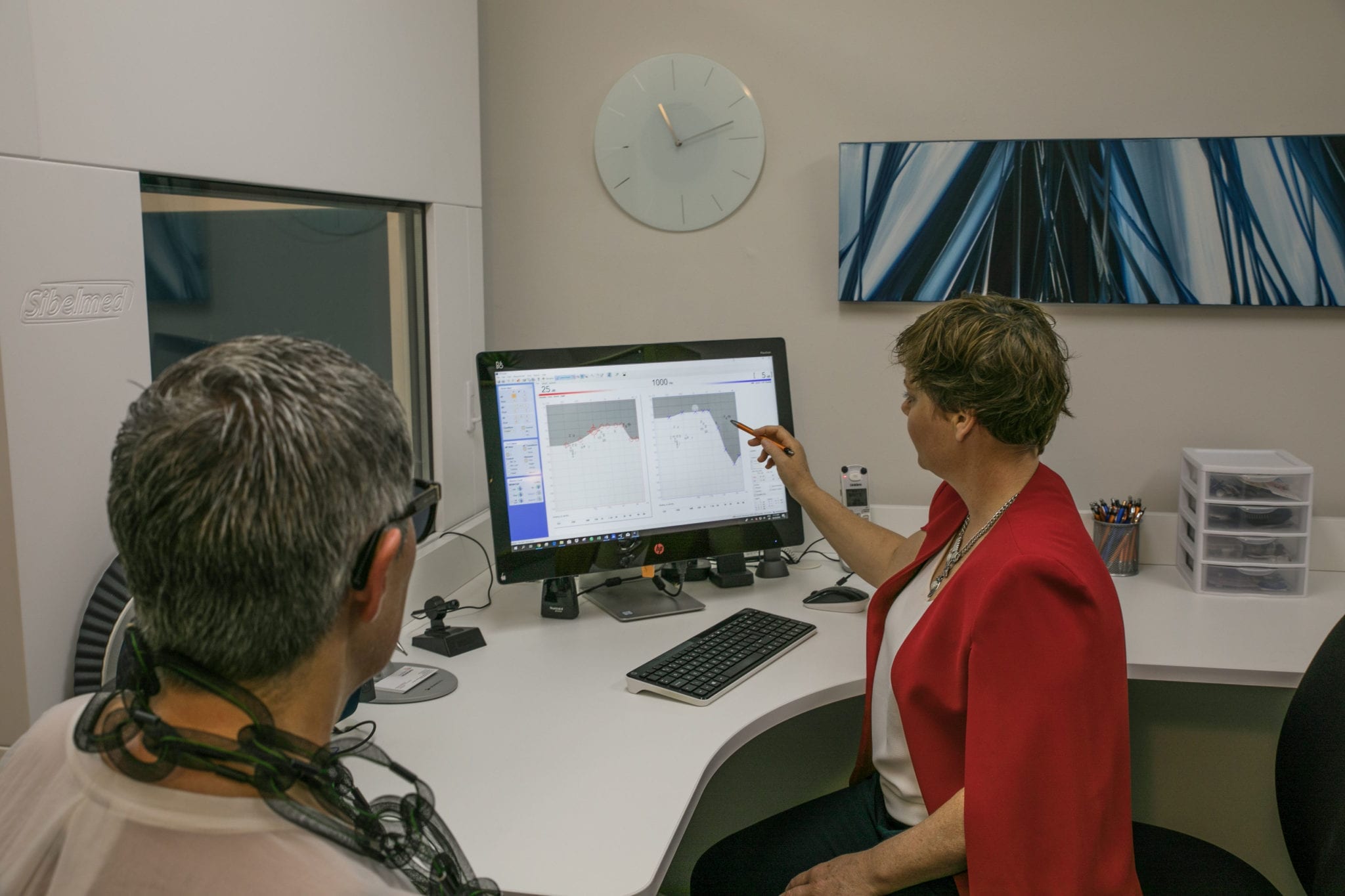
We help you understand and accept your hearing loss and make sure you are ready to move forward to getting hearing aids or other hearing management. We do a lot of counselling about the adjustment to hearing aids and the effects of hearing sounds that you have not been aware for a while. We prepare you for the change that will happen when you can hear again and start gently with the sound, turning it up gradually with time so you have time to adjust. We manage the fit of the hearing aids to your ears, so the hearing aids are comfortable and are holding in sound, or letting out low-frequency sound, whichever will best suit your hearing levels.
Real-ear measures allow us to precisely fit your hearing aids to your individual ear acoustics and make sure there are no loud peaks or areas of under amplification which often occur if hearing aids are only fitted to the hearing test and not matched to your ears.
We help you practice putting the hearing aids in, which can strangely be one of the most challenging parts of getting new hearing aids (until putting the hearing aids in becomes second nature). We connect up your hearing aids to your smartphone or other connected technology so you can better manage the sound you are hearing.
We look after your hearing for the long term. All of your appoinments for at least six months, are are included as part of the fitting. This is to be sure we have really met your hearing needs.
Before your warranty expires, we send your aids off for a warranty repair to check they are working as they should be and can provide you with loan hearing aids, while your hearing aids are away. We help with long term hearing aid maintenance and get in contact every two years to retest your hearing and adjust your hearing aids. We keep up with any changes in your hearing and make sure your hearing aids continue to meet your hearing needs as precisely as possible.
Great Audiology will make a significant difference to your hearing success
When it comes to getting hearing aids, remember that choosing the hearing aid technology is important but even the best technology will not meet your hearing needs unless it is fitted correctly for you.
Come and see your skilful Audiologist
(Maree O’Sullivan) at Auckland Hearing
for your best hearing outcomes.

By Car: Auckland Hearing at 66 Michaels Ave is a 2 minute drive (1.6 Kms) off the motorway. Exit the motorway at the Ellerslie Panmure Highway, Michaels Ave is on the left.
Parking: There is plenty of parking on the road directly outside the clinic.
Buses: There are bus stops on Marua Rd and Ellerslie- Panmure Highway, then about a 10-minute walk.
Access: The clinic is accessible on road level and has no stairs. There is wheelchair access.
The post Your Audiologist and your Success with Hearing Aids appeared first on Auckland Hearing.
]]>The post A hearing journey – Your path to hearing again appeared first on Auckland Hearing.
]]>Your Hearing Journey – The path to hearing again
The post A hearing journey – Your path to hearing again appeared first on Auckland Hearing.
]]>The post Getting Hearing Aids – What is the Process? appeared first on Auckland Hearing.
]]>The first and hardest step for many is the first one, making an appointment for a hearing test. Research has shown it takes people 7 to 10 years to do something about their hearing loss. Of course, while you are getting used to the idea that you may have some hearing loss, you are missing conversations and connections with people every day.
Adapting to hearing loss by changing the way you live your life
When you have hearing loss, the people around you adjust to your hearing loss so they can communicate with you. Friends and family learn they need to speak louder so, they do not have to repeat themselves. As time goes by, they may choose not to share incidental comments. You may start to make different decisions on how you will use your time (like avoiding social situations and communicating less). Hearing loss impacts the way you live your life. There is also a lot of new research showing other long-term effects of hearing loss when it is left untreated.
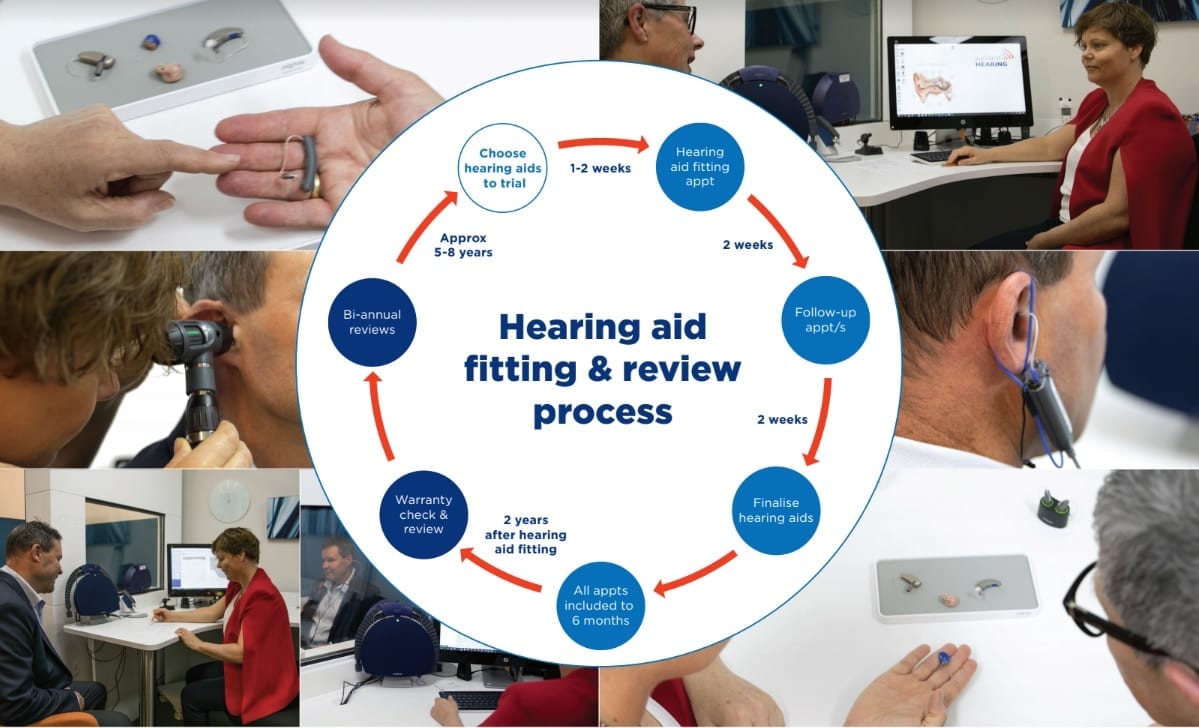
Diagram showing the process an approximate timeline for the life cycle of a pair of hearing aids
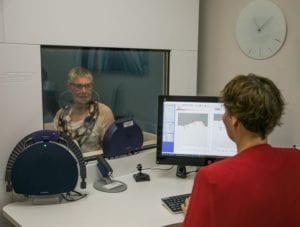
Having a hearing test
The first easy step is to have a hearing test. The hearing test will give you a clearer idea about your type and degree of hearing loss and how this is affecting the way you live your life. For example; your hearing test may explain why you can hear some sounds as well as everyone else; but you can’t follow the conversation when it is noisy. At this point, we will also suggest your options for help with your hearing, and if we need to refer you to a medical specialist, we will look at this point.
The next question is “Do you need hearing aids?”. Your audiologist will let you know if your hearing is in the range where hearing aids will help and your family may also have an opinion on you getting help with your hearing. However, it is essential that once you decide to get hearing aids that you are taking this step for yourself. It is true that other people in your life are probably affected by your hearing loss. However, it is better for everyone if getting hearing aids is your choice.
A full diagnostic hearing test will clarify your hearing levels and help identify possible causes of your hearing loss.
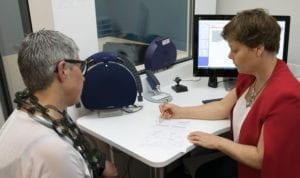
Explaining the hearing test
Your Audiologist will discuss your test results. If there is hearing loss, we will let you know why it is affecting your ability to understand people speaking; even though you can hear some sounds easily. At this point, we will refer you on to any other professionals, for further assessment or management, if needed.
If you are interested, we will tell you a bit about hearing aids and possible options that might suit you. You can even have a listen through some hearing aids.
Once you have decided to learn more about hearing aids, we will go through your needs assessment process. We will ask you questions about your lifestyle and hearing challenges. From here, we can decide on the hearing aid features and level of technology that suits you best. At this point, we create a list of situations where you would like to hear and communicate better. When choosing hearing aids for you, we take into account your:

Finding out about your hearing needs
Once you have decided to trial hearing aids, the process usually takes four to six weeks. The eight-week trial period allows you to be confident that you hear well with your hearing aids in various listening environments. Depending on your type and degree of hearing loss, it takes a few days to a few weeks to adjust to hearing sound again. Eight weeks is plenty of time for you to go through the adaptation process and get used to your new hearing aids.
Hearing aids are always paid for in full before taking them home. If you decide that hearing aids are not for you, you can hand them back within the eight-week time frame. If you do, you will be refunded the cost of the hearing aids minus the deposit (which covers some of the time we spent with you). We also have the option of changing to other hearing aids at this time if needed.
Our main goal at the fitting is to get you comfortable with the sound and management of your new hearing aids. We will:
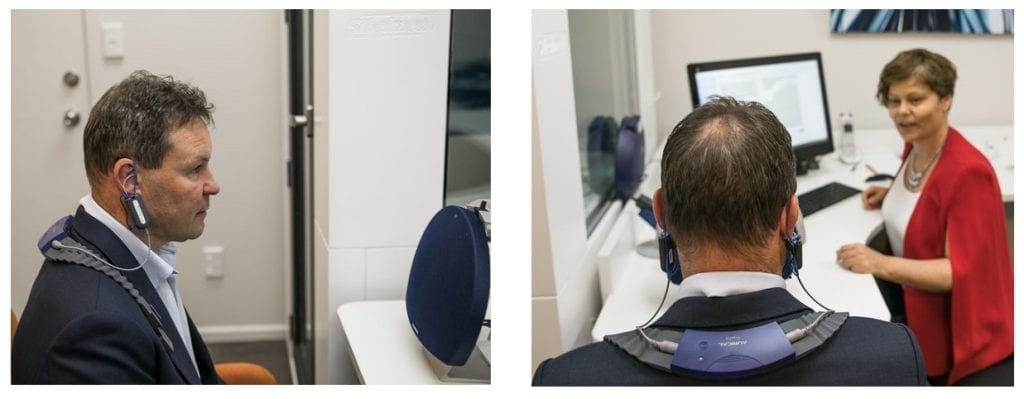
Hearing aid fitting – with real-ear measures
Follow up appointments allow us to check how you are going with the hearing aids and make adjustments, as required. Usually, people have got used to the initial settings of the hearing aids and are ready for a clearer sound. The number of follow up appointments required will vary for different clients.

Follow up appointments
Finalising means that you are happy with your hearing aids and have decided you want to keep them. We will not schedule another appointment at this time. However, you are welcome to contact us again if you have further questions or need adjustments to your hearing aids.
We include all the appointments up until 6 months in your initial fitting fees. That way, we can make sure your hearing aids are working well for you.
Warranty repairs
It is worth having your hearing aids sent off for a check over before your warranty expires. We will contact you before your warranty expires, so you can bring your hearing aids in and we will send them off. In many cases, the hearing aids are replaced or repaired under warranty, giving you refurbished hearing aids moving forward.
Bi-annual hearing test and hearing aid adjustment appointments
We will send you an email each year, asking how you are going with your hearing aids. Every two years, we will recommend a bi-annual review. We recommend you have a hearing test and hearing aid adjustment every two years, or sooner if you notice a change in your hearing. At your hearing test and hearing aid adjustment appointment, we will test your hearing and adjust your hearing aids to your current hearing levels.
We will also check your hearing aids over and make sure they are working as they should. If your hearing aids are not working as expected, we will send them off for repair. These appointments ensure you continue to hear as well as possible with your hearing aids.
Maree contacted me recently, and I went in for another check where she gave my hearing aids a tune-up to maintain their efficiency. With my slowly deteriorating hearing, I hadn’t noticed I didn’t hear as clearly as before. I was surprised at how much more I could hear once my hearing aids were adjusted. Excellent service indeed!
Traditionally hearing aids lasted about 4-5 years as they would be affected by wax, moisture, dust and dirt. Now, most hearing aids are covered by high tech coatings that make them much more resistant to moisture.
Hearing aid lifetime – It is not possible to tell how long these current aids will last but with proper care possibly 6-8 years. You will need regular hearing assessments and adjustments over that time to keep them working the best for you.
Insurance – Please list your hearing aids on your insurance policy just in case they get lost or something happens to them.
As an Auckland Hearing client, you will become part of our Auckland Hearing community. As long as you are interested, we will keep you up to date about the hearing world from hearing care to the latest hearing aids.
Please feel free to browse among the other articles about hearing loss and hearing aids.

Anna and Maree – At Auckland Hearing
Auckland Hearing is an independent hearing aid and audiology clinic set up by Maree O’Sullivan. Maree
has worked in Audiology for nearly 25 years and started Auckland Hearing so she could focus on the needs of each client (rather than corporate profits).
We provide a full range of hearing services and work with all of the Ministry of Health approved hearing aid brands in New Zealand. This means we can fit the hearing aids that best suit your needs.
The post Getting Hearing Aids – What is the Process? appeared first on Auckland Hearing.
]]>The post Set 900 by Sennheiser – Your hearing aid alternative appeared first on Auckland Hearing.
]]>As hearing loss increases in severity it makes conversation more difficult and stops us connecting with our friends and family. Some people need a simple solution that helps them hear their TV, listen to music and family and friends. The Set 900 by Sennheiser will help you hear music, family and the TV again.
This headset offers crystal clear audio in a lightweight, comfortable design. There are 3 setting to optimise speech understanding on the device and a large volume control that allows you to conveniently adjust volume without hassle.
The Set 900 by Sennheiser is simple to use, just place to your ears like a stethoscope and listen. Once you are finished place it back in the charging cradle to keep the battery charged.
This is deal for those wanting an easy way to keep communicating with family and friends but where manual dexterity or poor vision is getting in the way.

To get started with your Set 900 by Sennheiser you just need to charge it then use it. No need for a hearing test or to travel to the clinic.
The post Set 900 by Sennheiser – Your hearing aid alternative appeared first on Auckland Hearing.
]]>The post Hearing aid batteries – types, sizes & recycling appeared first on Auckland Hearing.
]]>
Yellow labelled size 10 hearing aid batteries are used in the smallest hearing aids including Invisible in the canal (IIC), completely in the canal (CIC) and the extra small behind the ear receiver in the canal (RIC) hearing aids styles.
They last between 3- 7 days depending on the degree of hearing loss and technology in the hearing aids.

Brown labelled Size 312 hearing aid batteries are used in some receiver in the canal (RIC) and in the ear (ITE) hearing aids.
They last about 10 – 14 days depending on the level of amplification and functionality in the hearing aids. Using functions like streaming sound from devices like your phone has a high battery drain and shortens battery life.

Orange labelled Size 13 hearing aid batteries are used in some receiver in the canal (RIC), behind the ear (BTE) and in the ear (ITE) hearing aids.
They last around 10 – 14 days depending on the level of amplification and functionality in the hearing aids. Using functions like streaming sound from devices like your phone has a high battery drain and shortens battery life.

Blue labelled Size 675 hearing aid batteries are used in hearing aids that require a lot of power including bone conduction hearing aids (BAHA) and cochlear implants (CI).
They last about 10 – 14 days depending on the level of amplification and functionality in the hearing aids, BAHA or CI.
Streaming is now available in some CIs and this will increase the battery drain.
Disposable zinc-air batteries are the most common type of hearing aid batteries. They have a sticker on them that covers small holes in the top of the battery. Once you pull the sticker off air gets into the battery and it begins to work. Zinc-air batteries usually last between 5 and 14 days depending on the battery size.
Once the sticker is pulled off the battery will continue to drain even if the hearing aids are not being used.

Rechargeable silver-zinc and nickel-metal hydride batteries generally last 10 to 14 hours (a day) before needing to be recharged – usually over night. The batteries look similar to zinc-air batteries but they do not have the holes to let air in.
An advantage of both Rechargeable Silver-zinc batteries and nickel – metal hydride batteries is that if the batteries run out, the same size disposable zinc-airbatteries can be used This might be helpful if they run out during the day or if you go on holiday and do not want to take a charger with you.
Rechargeable silver-zinc and nickel-metal hydride batteries last about a year and then need replacing. When you get your hearing aids at Auckland Hearing we notify you annually when it is time to renew your rechargeable batteries.

Lithium-ion (Li-ion) batteries are sealed within the hearing aid and are only removable by the hearing aid manufacturer. They are expected to last for 5 to 6 years, potentially the life of the hearing aid.
For the batteries to be replaced the whole hearing aid has to go into the manufacturer for a service.
It does not matter what branding is on your batteries, often hearing aid batteries are re-branded by a hearing clinic or a manufacturer. Clinics that fit hearing aids may be a better choice than other retailers, as they know the importance of good quality batteries. At Auckland Hearing we sell batteries by the card or at a discount by the box.

Check the expiry date on the back of the battery pack. The expiry date on the back fo the packet should be at least a year away. Expired batteries not only have a shorter life, they may secrete a corrosive white power into the battery compartment of your hearing aids.
It is best to buy your hearing aid batteries from a retailer that sells a lot of batteries, so they have not been sitting on the shelf for a long time.

Auckland Hearing has a hearing aid battery recycling program. Please bring in your used batteries as we will make sure they are disposed of safely.
We send our used hearing aid batteries to UpCycle who hold EPA approved battery export permits. The batteries are exported to South Korea for processing, where they get stripped off and chemicals are extracted for recycling.
The post Hearing aid batteries – types, sizes & recycling appeared first on Auckland Hearing.
]]>The post ACC hearing aid funding – Included products and services appeared first on Auckland Hearing.
]]>ACC provides “comprehensive, no-fault personal injury cover for all New Zealand residents and visitors to New Zealand. This means you can apply for our help, no matter how you got injured, or whose fault it was” – ACC website
ACC has been covering the cost of hearing habilitation for people who have hearing loss due to workplace noise or other accidents since the scheme began in 1974. Until 2011, ACC covered all costs associated with noise-induced hearing loss. The system was changed and have contributed a smaller amount towards hearing devices and services, since then. In July 2014, ACC again reviewed their funding, and here we outline the current ACC hearing loss regulations and how it will help those with hearing loss due to noise or accident.

A second device consultation – ACC covers the cost of a second appointment with another hearing clinic or Audiologist to assess your needs and the best solution for you. This means that if you are not comfortable with your first recommendation for any reason, for example – the price; you have the flexibility to seek other options.
ACC covers the cost of repairs up to the maximum of $234.09 for each aid within a two year period, once the warranty has expired.
Ear moulds – ACC contributes to the cost of new ear moulds, if they are needed, throughout the hearing aid lifetime.
The level of ACC hearing aid funding for each claimant is decided by assessing each individuals situation and attributing how much of the hearing loss is due to the accident or noise exposure.
Level 1 – $ 3157.90 (incl GST)
Level 2 – $3904.40 (incl GST)
Level 3 – $4953.05 (incl GST)
Level 1 – $ 1873.35 (incl GST)
Level 2 – $2247.10 (incl GST)
Level 3 – $2770.93 (incl GST)
ACC has increased the ongoing support of hearing aid wearers by increasing the amount they contribute to:
You will still need to contribute to the cost of your:
ACC will consider a new claim for hearing aid funding after six years. ACC will determine the amount of funding based on the nature of your hearing loss and whether they consider the cause was workplace noise or an accident. In most cases, you will be required to see an ear nose and throat specialist (ENT / ORL) to determine the cause of hearing loss.
Once accepted for new ACC hearing aid funding allocation, you will receive:
Applying for ACC funding:
Here is a link to the ACC website with more details.
Before January 2011 ACC covered the full cost of hearing aids and accessories, batteries, repairs, as well as annual hearing assessments and hearing aid adjustments. This meant that ACC claimants got first class service. ACC claimants could get hearing aids that met their needs as well as excellent follow-up and maintenance, all covered by ACC.
Unfortunately, as the ACC claimants increased in numbers, due to better technology and more hearing loss among people who work in noise (who had historically not protected their hearing), the cost became too high for ACC to maintain.
In early 2011 the ACC hearing loss policy was changed in a number of ways including:
It also resulted in many ACC claimants being unable to afford the hearing aids that would best meet their needs. Some previous hearing aids wearers had to either go without hearing aids or get very basic hearing aids, increasing the effect of their hearing disability and their ability to function in their normal listening environments. In 2014, they increased the funding allocation making hearing aids more affordable for clients.
“The Ministry and ACC are concerned that people are not accessing the services and devices available to help them manage their hearing loss. People who suffer from injury-related hearing loss must be able to access the hearing services and devices they are entitled to in order for them to fully participate in employment, education, their community, and enjoy an improved quality of life. Hearing loss often leads to social isolation and depression.
The Ministry’s and ACC’s main objective is that services must be affordable and easy to access. In this case, more people need to be accessing the hearing loss services and devices they are entitled to so that people suffering from injury-related hearing loss can fully participate in society.
Auckland Hearing is a small independent clinic. This means that our overheads are low and therefore our pricing is very competitive. If you are looking for great service as well as competitive pricing while getting your new ACC hearing aids you are welcome to come along for a second opinion and pricing comparison.
Follow this link to see more details of our hearing aid fitting process…
The post ACC hearing aid funding – Included products and services appeared first on Auckland Hearing.
]]>The post ACC hearing aid batteries – how to order batteries for ACC funded hearing aids appeared first on Auckland Hearing.
]]>
When you finalised you hearing aids your Audiologist sent in a battery request form for your ACC hearing aid batteries. ACC knows the size and type of batteries you need. The quantity of batteries you are expected to need is also on file and they are allocated to you each 6 months or so.
Time needed: 5 minutes.
When you need new batteries you can order more in the following ways:
Fill in your ACC number and your date of birth and then order more batteries
Freepost 225409
ACC Battery request
PO Box 62253
Sylvia Park
Auckland 1644
by phoning Community client direct on 0508 222 546.
Or for any other questions about ordering your ACC hearing aid batteries or more information about your hearing loss claim contact the ACC Hearing Loss team on 0800 101 996.



The post ACC hearing aid batteries – how to order batteries for ACC funded hearing aids appeared first on Auckland Hearing.
]]>The post Do I have hearing loss? Do I need hearing aids? appeared first on Auckland Hearing.
]]>*The perception that hearing loss is not severe enough
Gradually over time, the person with the hearing loss adjusts to not being able to hear, and the people around them change by speaking louder and directly to them. Eventually, as communication as it gets too hard, friends and family start choosing to share less. They stop telling jokes or sharing inconsequential news and discuss only significant matters.

Hearing loss is sneaky…
Hearing loss is usually gradual: first, you have to concentrate harder to follow the conversation in a cafe, next socialising becomes tiring from all the extra effort you need to use to understand the banter; soon you mis-hear the directions and find yourself asking for repeats.

Do I have a hearing loss?
Hearing loss affects people of all ages. There are many reasons for hearing loss including hereditary factors, noise exposure, trauma and ear pathology. Hearing loss does become more common as we age due.
Hearing loss is invisible
Hearing loss is painless
Hearing loss is gradual
Hearing loss is sneaky
The gradual nature of hearing loss means that we adapt over time. We change our behaviour, we choose our environments, and slowly our relationships change as everyone adapts to the change in our hearing.
Maree O’Sullivan
Having hearing loss does not usually mean that you stop hearing all sounds equally; the hearing loss pattern will depend on the cause of the hearing loss. In many cases, hearing loss begins in the high pitches leaving the hearing for low tones in the normal range. Words will start to sound dull or become less clear, resulting in a reduced understanding of speech, especially in difficult listening situations. For example, in a group of people, hearing while the TV or radio are on in the background or trying to understand conversation in a large echoey room. Although for some types of hearing loss (conductive) people hear well in noisy environments, where people are speaking loudly but cannot understand quiet speech.
The way you respond to reducing hearing clarity will depend on your personality, the degree and shape of your hearing loss and how long your hearing has been deteriorating. Most people with hearing loss find it tiring to follow the conversation, as their brain has to work harder to fill in all the sound gaps that they miss –

Often people find the tiredness from auditory fatigue gets worse at the end of the day. It can be harder to keep up with fast conversation, especially in a group or if people are facing away.
Many people tell me that they have felt embarrassed by their hearing loss at some point, either because they have misunderstood someone or they felt embarrassed asking for repeats. Some people find it easier to step back from the intense concentration they need to use to stay in the conversation and slip into their own thoughts. Others will talk more, as when you are talking you do not need to hear. Unfortunately, both of these options lead to a change in relationships over time.
Hearing loss impact varies between individuals and is influenced by many factors including degree and cause of hearing disorders, length of untreated hearing loss and personality. We know hearing disorders leads to social isolation, personality change and in some people increases the chance of anxiety and depression. Studies have also found a strong link between hearing disorders and the development of dementia. This US article outlines the effects of untreated hearing disorder in adults.

Hearing test
The first step is to have a full hearing assessment. This will assess your hearing level as well as pinpoint where in the ear the hearing loss originates. Hearing loss may be described as:
The discussion after the hearing assessment will give you knowledge and understanding about your hearing and how it affects your life at the moment. If you are ready and interested, we will talk to you about the options we have for helping you with your hearing and what is involved. We will discuss the hearing aid funding options available for you. We will even fit you with some hearing aids, and you can go next door to the cafe for a cup of coffee while you try them out. From here, it is up to you to decide your next step.
Hearing aids are the most common and effective way to help people with hearing loss (after excluding medical reasons). However, before trialling hearing aids, it is important that you are ready in yourself, to go through the hearing aid process. It must be your decision, not someone else’s…
I hope this article helped you gain a greater understanding of hearing loss and its effects. Maybe the subject could be rephrased. Rather than the question being “Do I need hearing aids?”
Perhaps, the question could be “Would I like to communicate easily with the people that matter to me?”

Do you want to communicate easily?- Do you want hearing aids?
Well… “Do you need hearing aids?” Do you want to be part of the conversation?
Hearing loss is common. Many people wear hearing aids. Have you noticed them? Click here for more…

Anna and Maree – At Auckland Hearing
Auckland Hearing is an independent hearing aid and audiology clinic set up by Maree O’Sullivan. Maree
has worked in Audiology for nearly 25 years and started Auckland Hearing so she could focus on the needs of each client (rather than corporate profits).
We provide a full range of hearing services and work with all of the Ministry of Health approved hearing aid brands in New Zealand. This means we can fit the hearing aids that best suit your needs.
The post Do I have hearing loss? Do I need hearing aids? appeared first on Auckland Hearing.
]]>